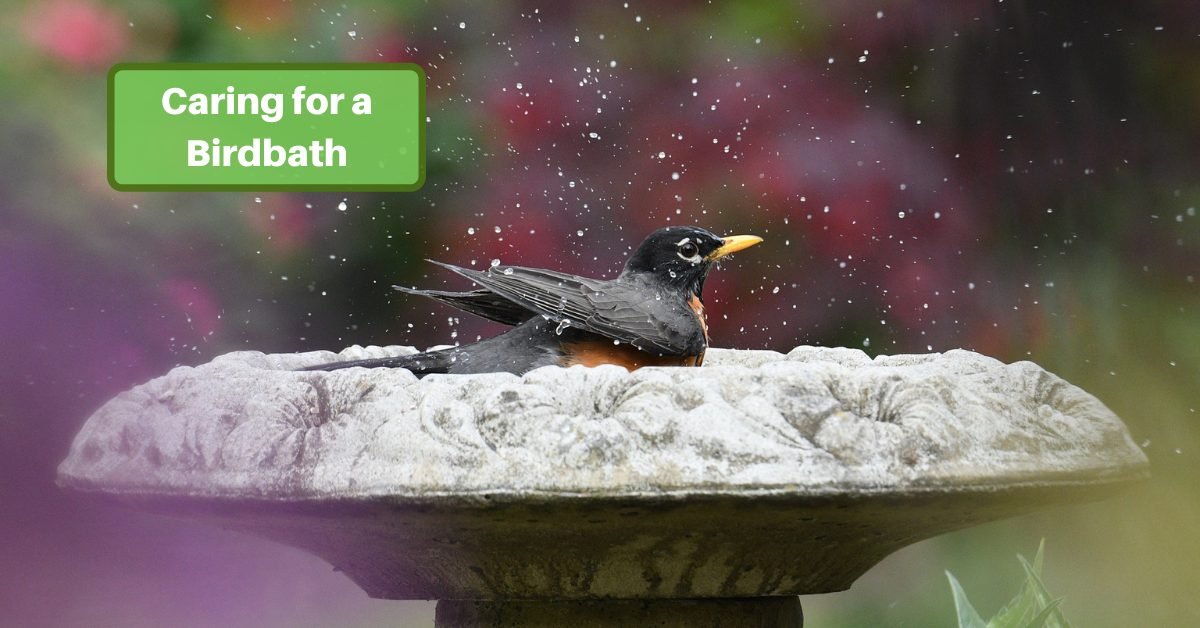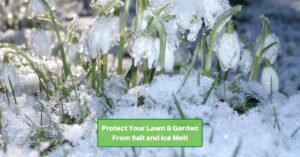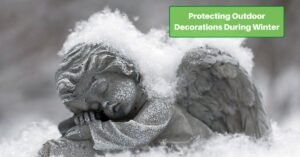Every bird wants to look their best! But sometimes, it’s hard to find a place to wash up. In all seriousness, a birdbath in your yard can be a way to help the local avian population. At the same time, you get to enjoy their beauty!
Birdbaths offer a “service” to birds, but you have to care for the birdbath to keep it from becoming a hazard. In this article, we’ll look at what the birdbath offers to birds and to you, what to look out for, and how to be sure to keep your birdbath in good shape.
Benefits of a Birdbath
A birdbath can be a win-win for you and the birds.
You can have the pleasure of watching many species of feathered friends flock to your yard. Of course, they bring their fine singing voices with them, too! So you get a great view and a wonderful soundtrack to go with it.
But that’s not the only advantage of attracting birds. Many of them eat insects! So you’ll have fewer pests to deal with around the yard.
Of course, the birds aren’t showing up to entertain you. They have a few reasons to be there.
One of these is to get a drink. Water can be hard to come by in some areas, and your birdbath can be a welcome relief.
But birds also bathe. No one seems to know why, but most types of birds wash themselves in water when it’s available. After that, they preen themselves. If water isn’t available, they’ll sometimes use dirt instead. But they do seem to prefer water when they can get to it.
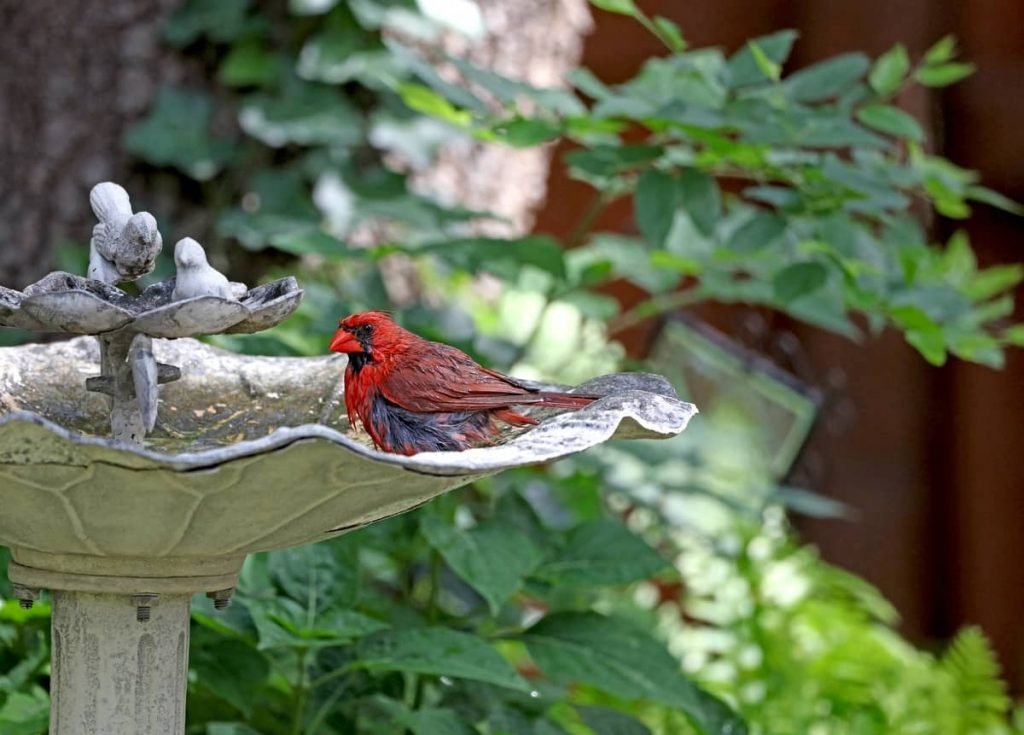
Bathing could be for obvious reasons – to keep clean. A bird’s feathers are only replaced once or twice a year, so washing helps remove dust and dirt. It can also get rid of mites and other bugs that are trying to make a home within the feathers.
Both drinking and bathing do seem, at least partly, to be a way to help birds cool off. Just like us, they seem to need a bit of relaxation.
Where To Place A Birdbath
The best spot for a birdbath is in the shade. This will keep the water cool and prevent it from evaporating too fast. Also, algae will grow faster if the water is in the sun. Bugs are more likely to lay eggs in warmer water, too.
If you don’t have a spot that’s shady all day, find one that at least has shade until mid-afternoon.
Under a tree is a great place for shade. But don’t put the birdbath too close to your bird feeders. You don’t want seed and husks falling in and fouling the water!
Another great place for a birdbath is near wherever birds like to perch, although not right underneath! Around any birdhouses you’ve added is a great choice, too.
In the winter, you can warm the water a bit in a teapot. It will cool off quickly in near-zero or sub-zero temperatures, and birds will love being able to access liquid water and even warm up a little bit. There are birdbath heaters available, but even without that, some warm water is a big help.
Cautions about Having a Birdbath
If you do have a birdbath, there are a few things to keep in mind.
The more perching space around the edge, the more likely birds will be to take advantage. Remember, most of them are part of a flock and they try to stick together.
Don’t opt for a bath that’s too deep, though. An inch of water is plenty. Birds don’t want something deeper. They could even drown if the water is too deep for them. If you feel that your birdbath is too deep, you could add some stones inside it to give birds a place to perch.
You also want to avoid a slippery surface. The birds need to be able to stand on it without sliding all over. But the old-fashioned concrete ones aren’t ideal, either, because algae and dirt can get into the tiny spaces and be hard to clean out.
A birdbath with a fountain is a nice touch. It will prevent the water from going stagnant, too. However, the water will evaporate a little more quickly.
Cleaning a Birdbath
Even under the best of conditions, you should clean your birdbath regularly. Bird droppings, dirt, feather, seeds, insect eggs, dead bugs, and more can soil it quickly.
That means you should dump and replace the water every few days. Don’t forget that the water will be a big help to your garden – and some of that disgusting junk that litters it can make great fertilizer! So we suggest using it on your plants.
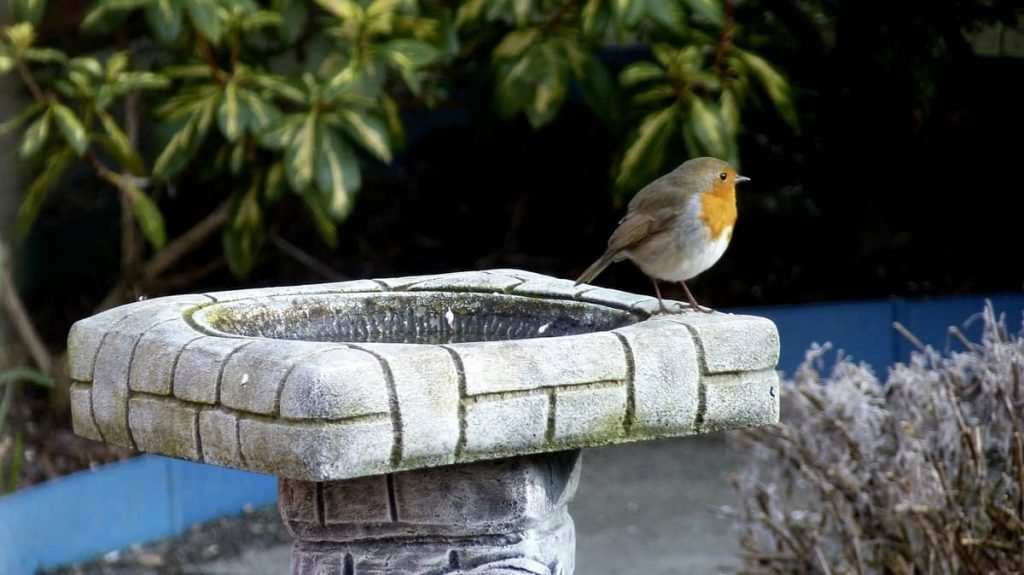
We suggest rinsing it with clean water before refilling it to help get rid of anything left behind.
You don’t have to do a thorough cleaning with every water change, but you should do one a few times a season, at least. When you clean it, you’ll want to wear rubber gloves. Remember all that stuff you poured out? Yeah, you don’t want to be touching what’s left behind.
Mix white vinegar with water in a proportion of 1 part to 10. Then use a scrub brush to scrub the bowl of your birdbath. The type of brush will depend on what your bath is made of – obviously, tough bristles will work on cement but would destroy a softer surface! And a soft brush might fall apart if used on cement.
Be sure to rinse the vinegar mixture off well. If you have a power washer, you can use it to make the job easier.
Conclusion
Adding a birdbath to your yard is a great way to attract beautiful birds. It also lets you contribute to their well-being! You’ll love all the visitors to your yard. Be sure to replace the water frequently and keep the bath clean to provide the best experience!

